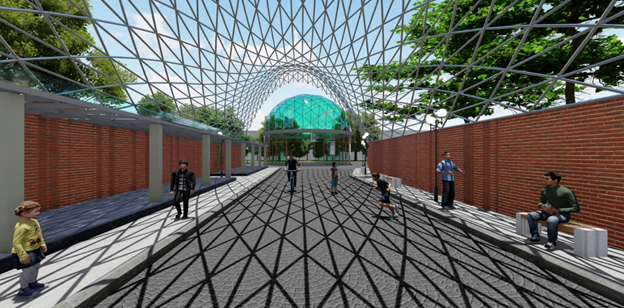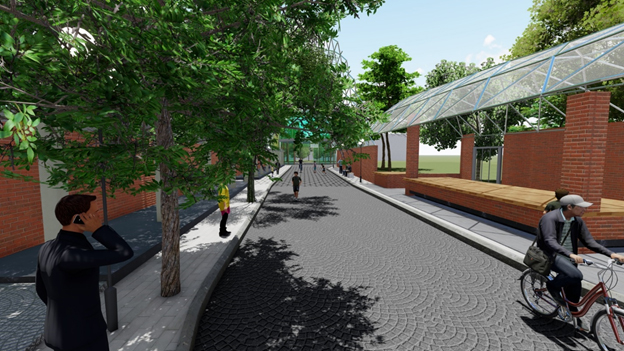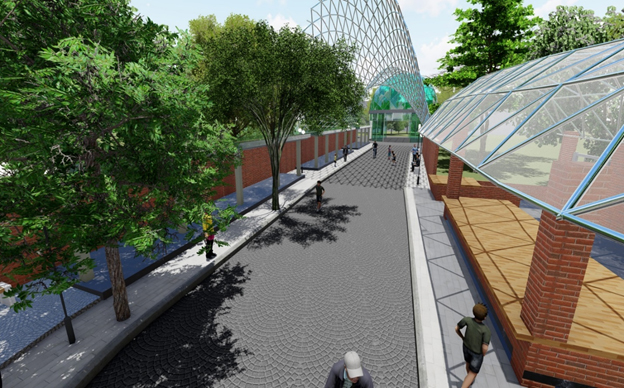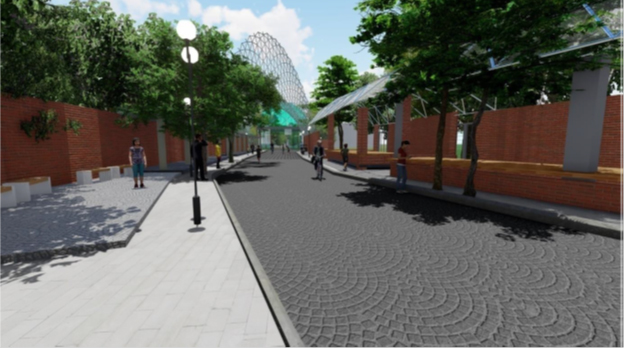Vegetable Market
Background-:
The existing ROW accommodates the vegetable market at PWD road. Unorganized bay of pedestrian
and vegetable vendors zones are spread over the carriage way, hence, the functionality of the
market faces the hindrance of visitors vehicles and goods carriers.


Necessity of the Project
The necessity of the redevelopment of this Vegetable Markets is for Economic and Institutional
Revitalization. Key objective of this project is to make the city streets free from congestion
due to street vendors and provide a new and well-designed market area with adequate
infrastructure and to create clean and vibrant market precinct in the city.
- Compact Urban Form
- Pedestrian friendly environment
- Intermingling of visitors on the narrow street
- Green Infrastructure for the street
- Varied sales of goods on a narrow street
Scope of the Project
The project is about redefining the QOL (quality of life) through public spaces. It’s
up-gradation of a community space (Including market) as well as Economic and Institutional
Revitalization.
The major Strategies for the redevelopment include:
- Provision of katta for vendors which includes storage, display area.
- Unobstructed circulation space.
- Provision of toilets and drinking water facility for vendors.
- Provision of proper drainage system to infuse hygiene within the market area
- Space for loading and unloading.
- Refurbishment of PWD office with supporting infrastructure.
- Provision of commercial space for adding the utilisation value to the land.
- Dedicated parking space only for two-wheelers.


Design Strategy:
The Vegetable Market is designed based on six design (Walkability) principles and an elaborate explanation is provided below for its implementation:
- Create fine-grained pedestrian circulation: The present ROW for the street is 20M and it has been developed in organic fashion over the years. Proposed ROW of 6M is provided to implement walkability and this width relates well to human scale. This design approach allows creation of fine-grained pedestrian circulation.
- Orient buildings to street and open spaces: The buildings (Vending Units) are oriented to street and pause points created in form of tribal plaza and glass house as entry point to the street.
- Organize uses to support public activity: The proposed Vegetable Market Street has good mix of uses to support public activity. There are small, medium and large vending units. Idea behind this approach is to provide an opportunity to play with architectural form and encourage mixed use development.
- Place parking behind buildings: Parking is provided only for two wheelers, and wherever possible it is provided either behind buildings, or in negative spaces created along the street.
- Address the human scale with building and landscape details: The height of vending units and other buildings address the human scale. Glass house at the entrance of the street deals with scale from a landscape design perspective.
- Provide clear, continuous pedestrian access: Streets, while fundamental, are only one part of the broader public realm. They should be seamlessly integrated with walkways, building entrances, and plazas. The Vegetable Market Street is well integrated with other elements of urban design and there is a thrust towards ambitious achievement to make street pedestrian friendly.




